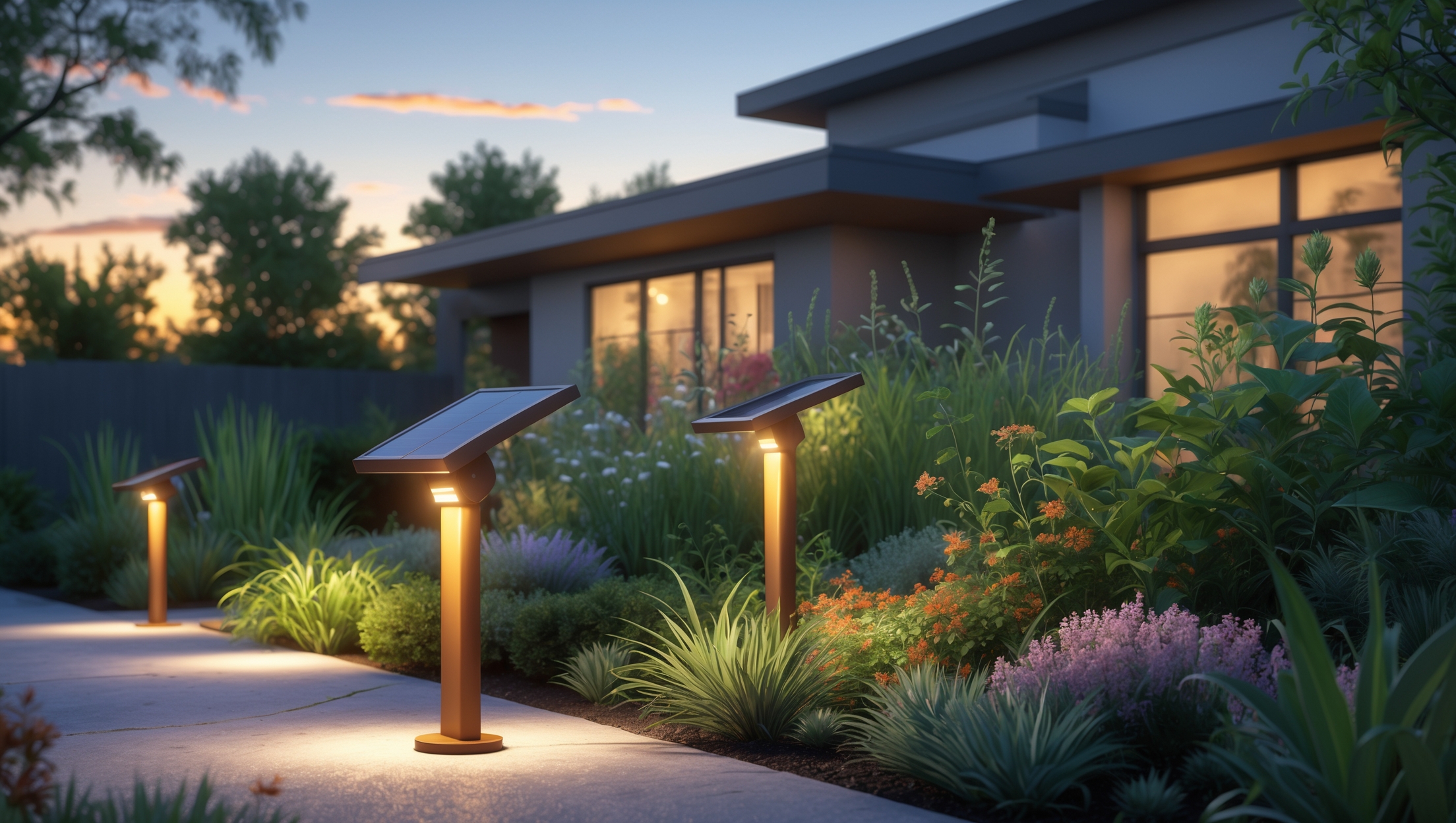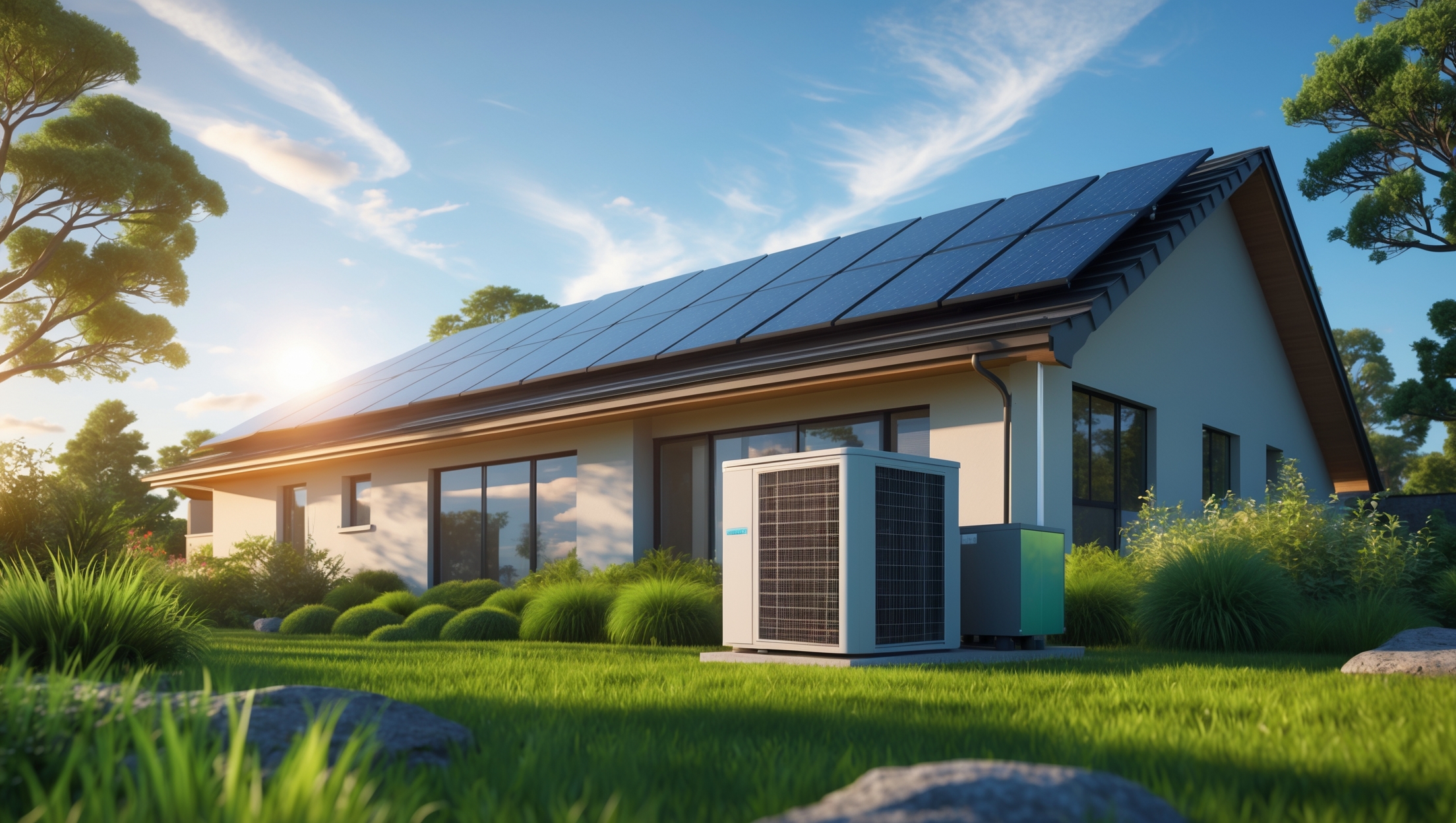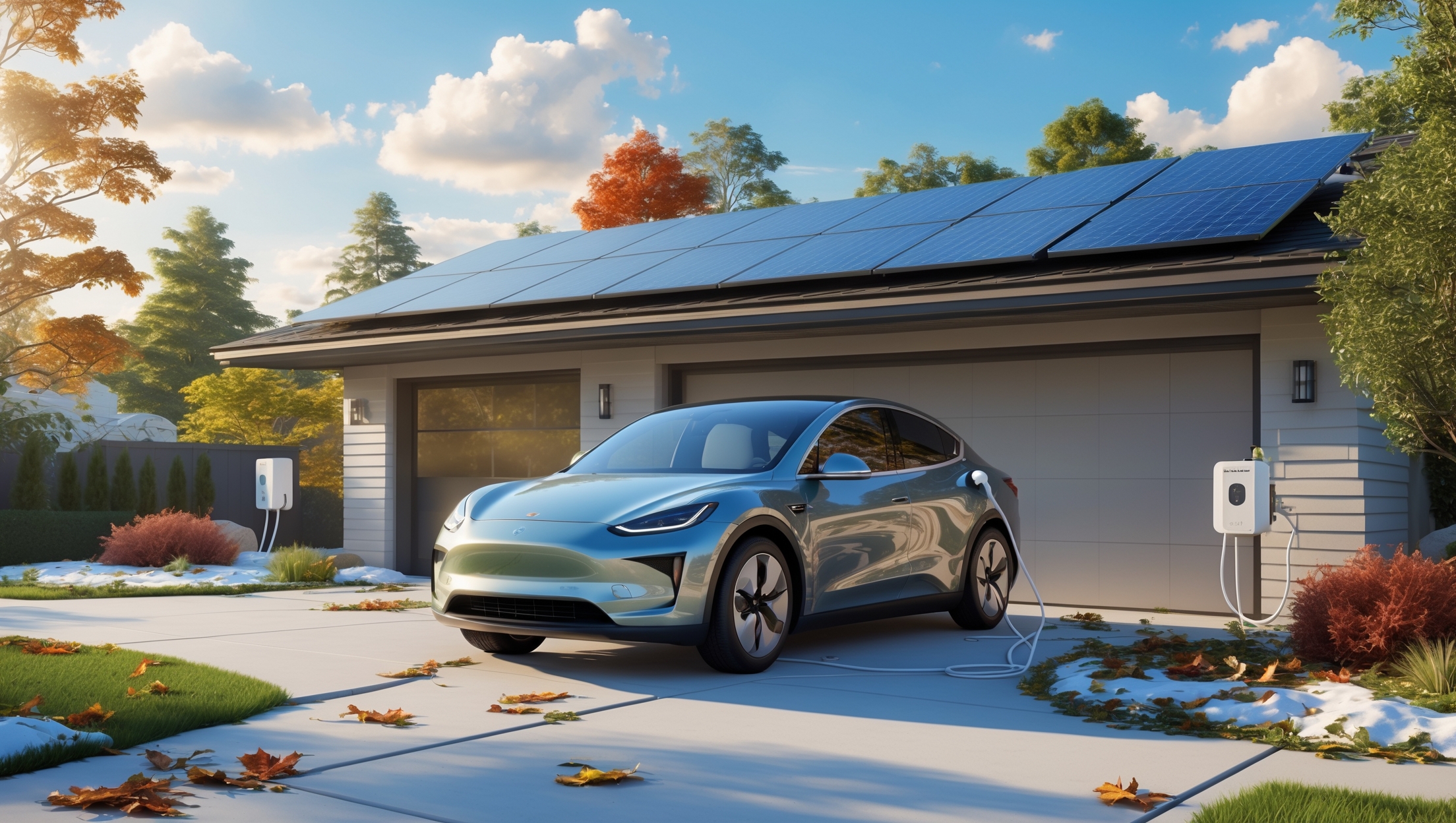Introduction: Why Compliance Matters for DIY Solar Outdoor Lighting
Solar-powered outdoor lighting systems are one of the most accessible, cost-effective, and impactful green technologies for sustainable homes. Whether you’re illuminating a walkway, garden, driveway, or patio, solar lighting reduces electricity usage, lowers your carbon footprint, and enhances nighttime safety. However, many homeowners underestimate the importance of compliance and permitting when installing these systems. Neglecting local codes, utility rules, or homeowner association (HOA) requirements can result in costly setbacks, fines, or forced removal of your eco-friendly upgrades.
This comprehensive guide brings together practical, actionable steps for navigating the compliance and permitting landscape for DIY solar-powered outdoor lighting. We’ll explore which rules apply, how to check them, what documentation you need, and how to ensure your installation is legal, safe, and future-proof. Whether you’re upgrading a single path or illuminating your entire landscape, this checklist will help you avoid common pitfalls and get your project approved the first time.
Understanding the Regulatory Landscape
Who Regulates Solar Outdoor Lighting Installations?
- Local Building Departments: Set codes for outdoor electrical work, even for low-voltage systems.
- Municipal Zoning Boards: May restrict lighting placement, height, and brightness.
- Homeowner Associations (HOAs): Often have guidelines on exterior modifications.
- Utility Companies: In rare cases, may require notification, especially if grid-interactive features exist.
Commonly Overlooked Rules
- Historic District Restrictions: Special permits may be needed in designated areas.
- Wildlife and Dark Sky Ordinances: Some towns limit outdoor lighting to protect nocturnal animals or reduce light pollution.
- Property Line Setbacks: Fixtures may need to be a certain distance from your boundary.
- Underground Utility Markings: Digging for post or wire installation may require a utility locate service.
Step-by-Step Compliance and Permitting Checklist
1. Define Your Project Scope
- Map out where each solar fixture will be placed.
- Decide on fixture type (path lights, spotlights, wall-mounted, etc.).
- Determine if your system is fully off-grid or has any hybrid/grid-tied components.
- List any trenching, digging, or mounting activities involved.
2. Research Local Building Codes
- Search your city or county’s building department website for “outdoor lighting” or “solar energy” codes.
- Note voltage thresholds: Most solar lights are low-voltage, but some grid-interactive or high-output models may require permits.
- Identify rules on fixture mounting, especially for structures (e.g., posts, walls, fences).
Pro Tip: If your municipality has adopted the International Residential Code (IRC), look for sections on “low-voltage lighting systems” and “photovoltaic systems.” Even self-contained solar lights may have mounting or placement requirements.
3. Check Zoning and Environmental Ordinances
- Contact your local planning/zoning board or search their online code database.
- Look for rules on fixture height, brightness (lumens), color temperature, and hours of operation.
- Review any dark sky, wildlife, or light pollution ordinances that may affect your design.
- Confirm property line setbacks for lighting fixtures.
4. Consult Your HOA (If Applicable)
- Obtain a copy of your HOA’s architectural or landscaping guidelines.
- Review rules on fixture style, color, placement, and approval process.
- Prepare a simple plan or photos to submit for HOA review, if required.
Warning: Installing solar lights before receiving HOA approval can result in fines or forced removal, even for minor projects.
5. Review Utility and Easement Requirements
- If trenching or digging is required, contact your state’s “Call Before You Dig” service (e.g., 811 in the U.S.) to have underground utilities marked.
- Check for utility easements on your property plat; avoid installing fixtures or running wires in these areas without permission.
- For hybrid/grid-tied systems: Notify your utility company and inquire about interconnection requirements or net metering (rare for lighting-only setups, but essential if integrating with home PV systems).
6. Determine Permit Requirements
- Contact your local building department by phone or online.
- Describe your project: “I’m installing solar-powered outdoor lighting, all low-voltage, with no grid connection. Do I need a permit?”
- Request written confirmation if no permit is required.
- If a permit is needed, ask for application forms and a checklist of required documents or drawings.
7. Prepare Required Documentation
- Site Plan: Simple sketch showing fixture locations, property lines, and existing structures.
- Fixture Specs: Manufacturer’s cut sheets or catalog pages for each solar light model.
- Mounting Details: How each fixture will be installed (e.g., staked in ground, attached to fence, mounted on post).
- Electrical Schematic: If using wired or hybrid systems, provide a basic diagram of connections and power sources.
Keep digital copies of everything for your records and future reference.
8. Submit Applications and Pay Fees
- Complete all required forms and submit via your city’s online portal or in person.
- Pay any nominal permit fees (often waived for low-voltage, solar-only projects).
- Keep a copy of your submission and payment receipt.
Note: Permit review times can range from same-day to several weeks. Plan accordingly, and don’t begin work until you have approval in writing.
9. Schedule a Final Inspection (If Required)
- Contact your building department to request a final inspection.
- Prepare your site: All fixtures installed, wiring secured, and trenches backfilled.
- Provide access to all parts of the system for the inspector.
- Address any corrective actions promptly if issues are found.
Special Considerations for Different Solar Lighting Types
Self-Contained Solar Fixtures (No Wiring)
- Generally exempt from permits if no digging or hardwired connections are involved.
- Still subject to zoning, HOA, and dark sky rules.
Solar Lighting with Remote Solar Panels
- May require trenching for low-voltage wires. Utility marking and sometimes building permits needed.
- Ensure weatherproof connectors and follow National Electrical Code (NEC) for exterior low-voltage wiring.
Hybrid/Grid-Tied Solar Lighting
- Permits almost always required. Licensed electrician may be needed for any grid interaction.
- Additional utility notification and interconnection agreement may apply.
Practical Tips for a Smooth Permitting Process
- Start early: Research codes and permits at the planning stage, not after purchase.
- Document everything: Keep emails, approval letters, and drawings for your records.
- Communicate clearly: Be concise and specific about your project’s solar, low-voltage nature.
- Be flexible: If your city or HOA requests changes, modify your design for compliance.
- Leverage manufacturer support: Many leading solar lighting brands can provide compliance documentation or help answer regulator questions.
Frequently Asked Questions (FAQ)
Do I need a permit for plug-and-play solar path lights?
In most jurisdictions, no permit is required for self-contained solar lights that don’t involve wiring, digging, or structural changes. However, always check your local rules, especially if you live in an HOA or historic district.
Can I install solar lighting in a rental property?
You usually need landlord approval for any permanent installation. Some cities require permits for exterior modifications—check your lease and local codes.
What happens if I skip the permit process?
Possible consequences include fines, forced removal, difficulty selling your home, or liability if someone is injured due to a non-compliant installation.
How do I find my city’s codes?
Start with your city or county’s official website. Look for “building department,” “planning and zoning,” or “code enforcement” sections. Many provide searchable code databases or downloadable guides.
Sample Compliance Checklist for DIY Solar Outdoor Lighting
- ☑ Project scope defined (locations, types, system design)
- ☑ Local building codes reviewed (permit needs identified)
- ☑ Zoning and environmental ordinances checked
- ☑ HOA guidelines reviewed and approval obtained (if applicable)
- ☑ Utility locate service scheduled (if digging)
- ☑ Permit application submitted (if required)
- ☑ Site plan and fixture specs prepared and filed
- ☑ Fees paid and receipts saved
- ☑ Final inspection scheduled and passed (if needed)
Conclusion: Lighting the Way to Sustainable, Legal, and Hassle-Free Solar Upgrades
Embracing solar-powered outdoor lighting is an excellent step toward a more sustainable, energy-efficient, and beautiful home environment. While the technology is increasingly plug-and-play, the legal and regulatory landscape remains nuanced. By taking time up front to understand and follow local codes, zoning rules, and HOA guidelines, you protect your investment, avoid unnecessary setbacks, and ensure your lighting system serves your home safely and legally for years to come.
Remember, every municipality—and even neighborhood—can have unique requirements. The most common DIY mistake is assuming that “solar” means “permit-free.” While many small projects proceed without paperwork, digging, wiring, or adding grid-tied elements usually trigger extra compliance steps. With this checklist, you’re equipped to ask the right questions, gather the right documents, and complete your installation without headaches or surprises. Sustainable living isn’t just about reducing your carbon footprint—it’s about making responsible, future-proof choices that respect your community and the environment. Now, with your compliance roadmap in hand, you can illuminate your outdoor spaces with confidence, knowing your green upgrade is as legal as it is eco-friendly.





I noticed you mentioned that even low-voltage systems might be subject to local building codes. Do you have any tips for figuring out whether a simple solar path light installation in my yard actually requires a permit, or is it generally exempt in most areas?
A simple solar path light installation is usually considered exempt in most areas since these lights are self-contained and low-voltage. However, requirements can vary by city or county. The best approach is to check your local building department’s website or give them a quick call to ask about outdoor lighting rules. Be sure to mention that your project uses pre-made, low-voltage solar lights and is not connected to household electrical wiring.
You mention that some towns have wildlife and dark sky ordinances. How do I find out if my municipality has these rules, and are there any common ways to make my solar lights compliant if brightness is an issue?
To find out if your area has wildlife or dark sky ordinances, check your town or city’s website or contact the local planning or zoning department. If your solar lights are too bright, you can usually make them compliant by choosing fixtures with lower lumen ratings, using shields to direct light downward, or selecting models with warm color temperatures. This helps reduce light pollution and protect local wildlife.
How much extra time should I budget for getting approvals from the local authorities and my HOA before I actually begin installing my solar lighting system? Are there any common delays I should plan for?
For local authority approvals, it’s wise to allocate at least 2 to 4 weeks, though it can vary based on your area’s workload. HOAs typically take 1 to 3 weeks, but some may require additional documentation or meetings. Common delays include incomplete applications, missed HOA meetings, and requests for system details or changes. Starting the approval process early and keeping paperwork organized can help avoid the most frequent hold-ups.
If my HOA has strict guidelines about modifications, but I want to install solar lights along my walkway, do they usually require pre-approval or just notification after the project is done?
Many HOAs require homeowners to get pre-approval before making any exterior changes, including installing solar lights along walkways. This helps ensure modifications align with community guidelines. It’s best to review your HOA’s covenants or reach out to the board directly to confirm whether you need approval or just notification, as requirements can vary between associations.